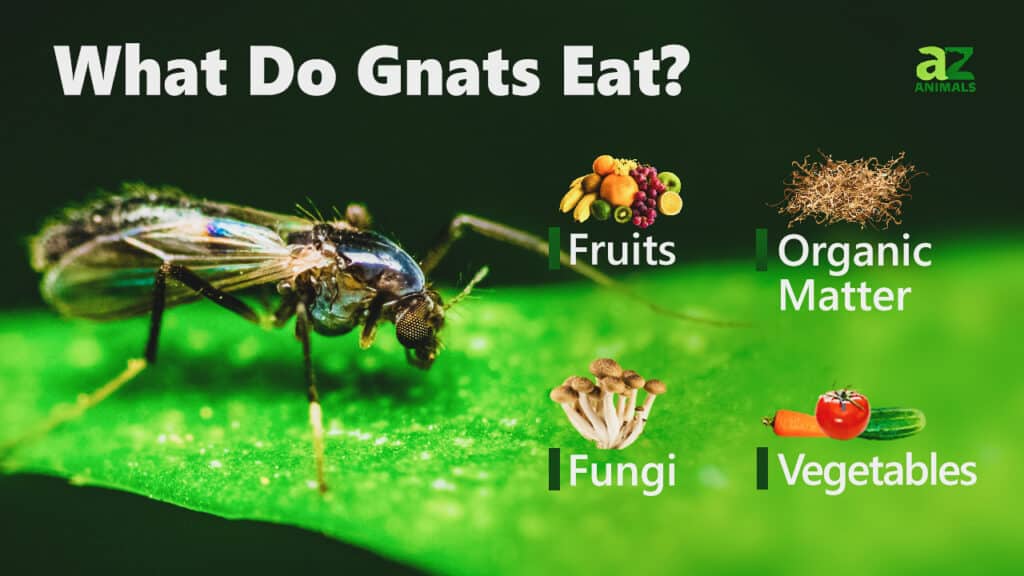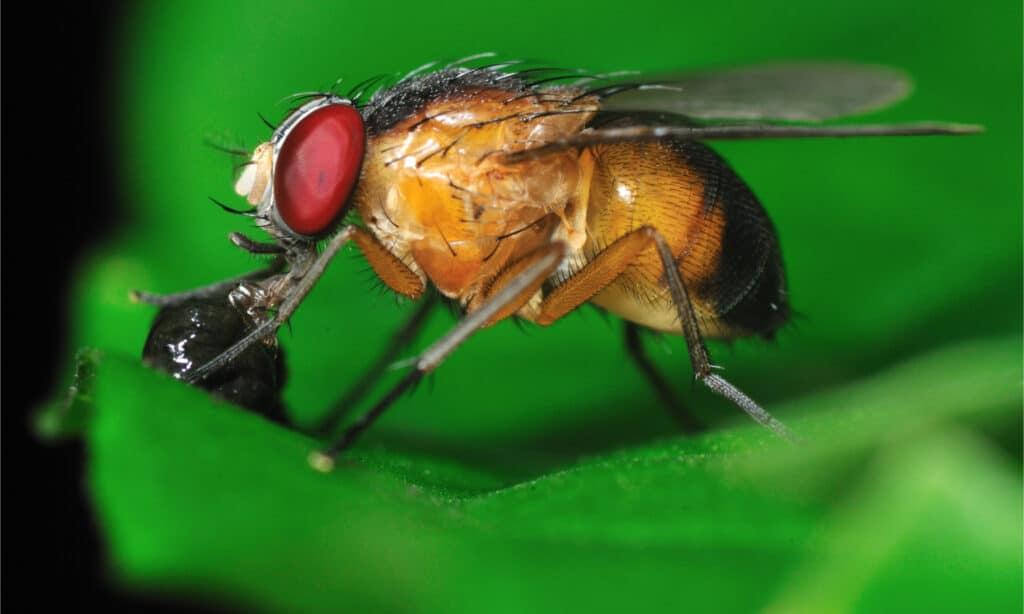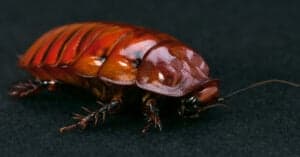Gnats are tiny insects. However, despite their small size, they can get annoying. Many people recognize them when they see them. Although, you may not have a full understanding of what distinguishes gnats from other flies. Learn what they are, their distinctive features, and why the term is used loosely. Discover where gnats come from and what you can do to get rid of them if they’ve gotten a bit too cozy in your home!
What Are Gnats?

The term ‘gnat’ doesn’t refer specifically to a type of fly and is rather used as an umbrella term that encompasses a variety of small flies. A fly has to have three main components that include two wings along with a haltere (balancing organ shaped like a club). While all gnats are flies, not all flies are gnats. For example, some flies exist under the suborder of Brachycera. These flies are grouped as such based on their branched antennae. Flies that fall under this category are not gnats.
The other suborder is Nematocera, which includes the types of flies that are gnats. Some of the gnats that make up this group include mosquitoes and crane flies. They don’t have branched antennae and instead have antennae that appear more like threads. They may even appear kind of fuzzy. Mainly, gnats are flies that fall under this suborder and that are smaller than the rest. Some types of gnats swarm.
There are additional flies that may be considered gnats but identifying them as such requires further inspection into their morphology. Some examples include:
- Black flies (scientific name: Simuliidae)
- San flies (scientific name: Phlebotominae)
- Fungus gnats (scientific name: Sciaridae)
Where Do Gnats Come From?

Fruit flies love the foods in your home like fruits and veggies.
©Jordan Lye/Shutterstock.com
Gnats arrive indoors from the outdoors. They find tiny crevices in doors and windows to sneak through. You’ll typically spot them around rotten foods like fruit and around trash bins. They may also be found by house plants or sinks and drains. Ultimately, it depends on the type of gnat. Different gnats have different preferences. For example, fungus gnats love house plants and drain flies love standing water. Fruit flies love the foods in your home, like fruits and veggies.
How to Get Rid of Gnats?
Although tiny, they can be pesky (and some of them bite!), so it’s important to know how to get rid of gnats in your home. You have some options you can try yourself, but you always have professionals you can call if you happen to be dealing with an infestation. A few of the tricks you can try on your own include:
Creating a Gnat Trap
This is a simple solution. Mix water, apple cider vinegar (or white vinegar), sugar, and dish soap in a bowl. The gnats will fly on over like it’s a party and they’re on the guest list. The dish soap ultimately kills them. If you’re just dealing with a few, it’s a super easy fix. However, if there are more than a few, you may need to set out multiple bowls with the solution to get them all.
Creating a Candle Trap
This is another creative method you can try to get rid of gnats. You need a candle, a candlestick with a holder, and water. Fill the base portion with a little bit of water so the gnats can fall in and drown. Light the candle and turn off any lights in the home so that gnats gravitate to the flame. They will either get so close they burn, or they’ll fall and land in the water.
Spraying the Gnats
Using some of the same ingredients from the gnat trap (vinegar, water, and dish soap), you can combine everything into a spray bottle. You only need a tablespoon of vinegar; the rest is water and a bit of dish soap. This is a helpful spray to have around the house, but keep in mind you are spraying soap, so be mindful of where you spray it and rinse any areas that shouldn’t be soapy afterward.
Using Bleach for Your Drains
A simple fix when dealing with drain flies is simply to use the power of bleach. When you spot them, pour a cup of diluted bleach down the drain in your bathroom or kitchen. Do this regularly to prevent gnats.
Trying An Already-Made Glue Trap
You can purchase these online or at your local stores. Basically, they’re sticky traps that attract gnats. Once they land on them, they’re stuck, and that’s the end of them! At least for a while. You may need to replace them regularly if the problem is ongoing.
The photo featured at the top of this post is © thatmacroguy/Shutterstock.com
Thank you for reading! Have some feedback for us? Contact the AZ Animals editorial team.







